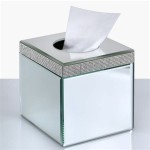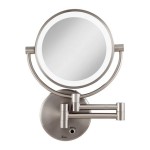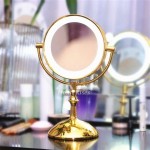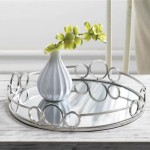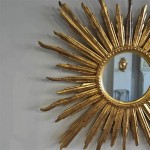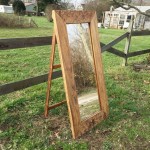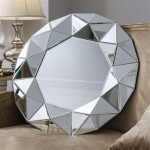How To Fix a Smashed Wing Mirror
A smashed wing mirror is a common car problem that can result from various incidents, such as collisions, vandalism, or even accidental bumps. Replacing or repairing it promptly is crucial for safe driving. This article provides a comprehensive guide to addressing this issue, covering everything from assessing the damage to performing the repair or replacement yourself.
Assessing the Damage
Before taking any action, a thorough damage assessment is essential. This will determine the extent of the damage and the necessary repairs. The assessment involves checking several key areas:
- Mirror Glass: Check if the glass is cracked, shattered, or completely missing.
- Mirror Housing: Inspect the plastic housing for cracks, breaks, or loose parts.
- Mirror Adjustment Mechanism: Test whether the mirror adjustment controls still function. If not, internal components may be damaged.
- Electrical Components (if applicable): For mirrors with integrated turn signals, heating elements, or other electrical components, check for functionality and wiring damage.
- Mounting Points: Examine the points where the mirror attaches to the car. Look for bends, breaks, or loose screws.
Gathering Necessary Tools and Materials
Once the damage is assessed, gather the necessary tools and materials. The exact requirements will depend on the extent of the damage. However, some common tools and materials include:
- Screwdrivers (Phillips and flathead): For removing screws and fasteners.
- Pliers: For gripping and manipulating small parts.
- Replacement Mirror Glass (if needed): Match the make and model of your vehicle.
- Replacement Mirror Housing (if needed): Again, ensure compatibility with your vehicle.
- Automotive Adhesive (if needed): For securing the mirror glass to the housing.
- Wiring Connectors and Tools (if applicable): For repairing electrical connections.
- Protective Gloves and Eye Wear: For personal safety.
Replacing the Mirror Glass
If only the mirror glass is damaged, replacing it is often a straightforward process:
- Carefully remove any remaining broken glass fragments: Wear gloves to protect your hands.
- Inspect the mirror housing for any clips or adhesive residue: Clean the housing to ensure a proper fit for the new glass.
- Apply adhesive to the back of the new mirror glass or the housing (as per the product instructions): Ensure even distribution of the adhesive.
- Carefully position the new mirror glass onto the housing: Press firmly and hold until the adhesive sets.
Replacing the Mirror Housing
If the mirror housing is damaged, replacing the entire unit is typically necessary:
- Disconnect the electrical connector (if applicable): Locate the connector behind the mirror and carefully detach it.
- Remove the screws or bolts securing the mirror housing to the car: These are usually located inside the door panel or under a trim piece.
- Carefully detach the broken housing from the car: Be mindful of any remaining wiring.
- Install the new mirror housing: Follow the reverse steps of removal, ensuring all screws and bolts are tightened securely.
- Reconnect the electrical connector (if applicable): Test the mirror adjustment and other electrical components to ensure they function correctly.
Repairing Minor Damage to the Housing
For minor cracks or breaks in the housing, repairing the damage might be an option, although replacement is often recommended for a more durable fix. The repair process generally involves:
- Cleaning the damaged area: Remove any dirt or debris.
- Applying plastic epoxy or another suitable adhesive: Follow the manufacturer's instructions for application and curing time.
- Sanding and smoothing the repaired area (if necessary): This ensures a flush finish and restores the mirror's appearance.
- Repainting the repaired area (if necessary): Match the original color of the mirror housing for a seamless repair.
Addressing Electrical Component Issues
If the mirror incorporates electrical components, and these have been damaged, further steps are required. This may involve:
- Inspecting the wiring for damage: Look for cuts, breaks, or loose connections.
- Repairing or replacing damaged wiring: Use appropriate connectors and electrical tape for secure connections.
- Testing the electrical components: Ensure they function correctly after the repair.
- Checking the fuse: A blown fuse could be the cause of the electrical malfunction.
Seeking Professional Assistance
While many wing mirror repairs can be done at home, some situations warrant professional assistance. Consider contacting a qualified mechanic or auto body shop if:
- The damage is extensive: This might include significant damage to the mounting points or internal mechanisms.
- You are uncomfortable working with electrical components: Incorrectly handling wiring can cause further damage or safety hazards.
- You lack the necessary tools or expertise: A professional can ensure the repair is done correctly and efficiently.

Wing Mirror Repair And Replacement Car Cosmetics

How Do You Temporarily Fix A Broken Wing Mirror Turborevs

Automotive Maintenance 101 Replacing Side View Mirrors

Broken Side Mirror What Are The Repair Options And Cost

How To Prevent Side View Mirror Damage Auto Glass Express Windshield Replacement Repair

Wing Mirror Repair And Replacement Car Cosmetics
Panda 2024 How To Repair A Door Mirror Twisted Off Its Bracket The Fiat Forum

Broken Side Mirror What Are The Repair Options And Cost

Five Laugh Worthy Diy Side Mirror Fails

How To Replace Wing Mirror Glass Without Breaking Asc Blog

